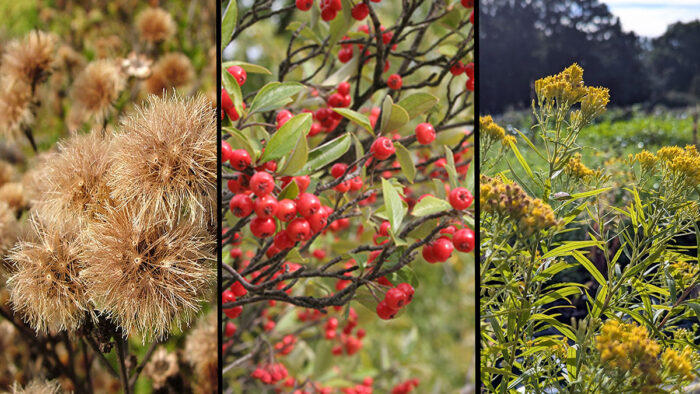
Fall could easily be a time of mourning. It’s the season of withering and dying back, of shortening days and cooling nights. Yet if you look at natural areas of the Southeast in fall, they’re anything but sad. There’s movement beneath the changing colors. Birds are hopping from one branch to another in search of ripening berries, and small critters are busy foraging in the underbrush. Fall brings a bounty like no other, and it’s all made possible by underlying ecosystems of native plants. You can bring some of this autumnal excitement to your own garden, starting with these southeastern native shrubs and perennials that offer exceptional fall interest for autumn gardens:
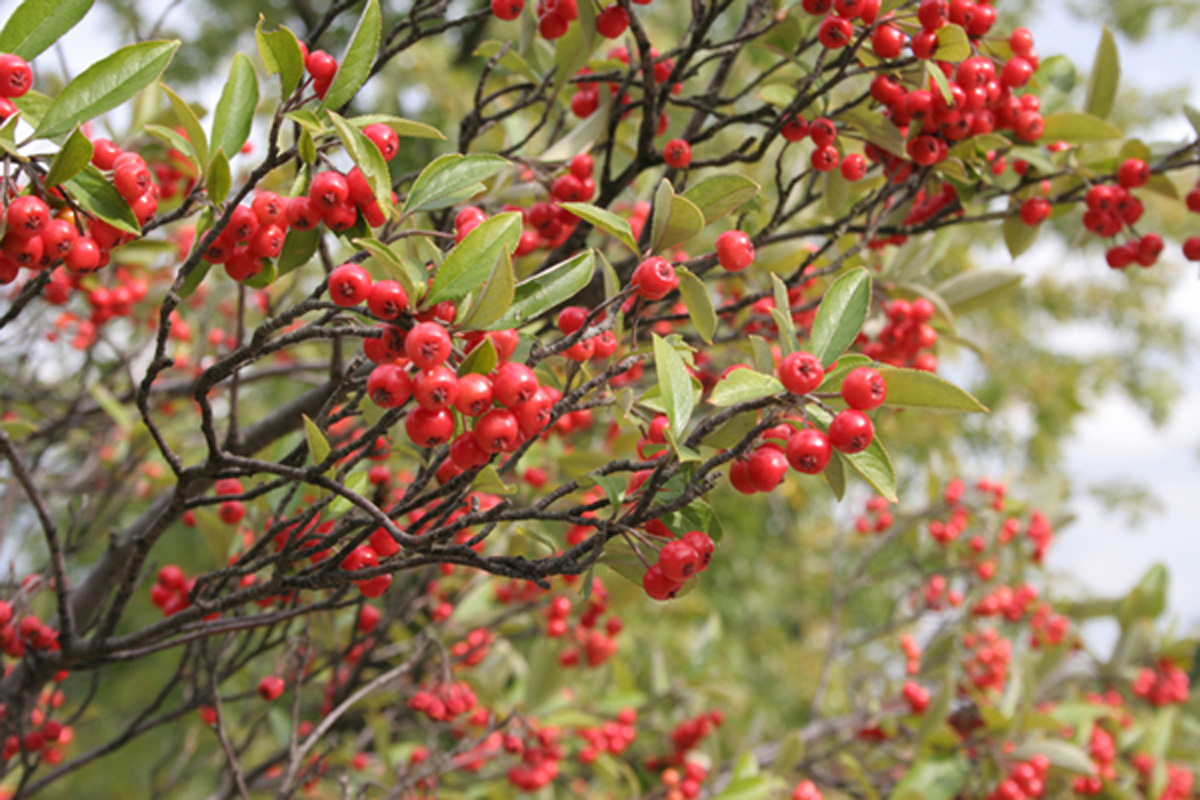
Red chokeberry
Name: Aronia arbutifolia
Zones: 4–9
Size: 6 to 12 feet tall and 3 to 5 feet wide
Conditions: Full sun to partial shade; dry to wet, well-drained soil
Native range: Eastern North America
Red chokeberry is a deciduous shrub deserving of a space in southeastern gardens for its multiseason interest and extraordinary benefit to birds. Its dainty white flowers in spring eventually develop into bitter red berries in fall. These persist long after the leaves have turned a brilliant shade of crimson and then dropped, to the delight of nonmigratory birds like cardinals and titmice. The plant’s vase-shaped habit of many reddish, peeling stems, which provide ornamental appeal, gives birds shelter as well.
With a widespread native range throughout the East Coast and Gulf states, red chokeberry is an easygoing garden specimen that can adapt to a wide range of sites. It can handle full sun to partial shade, wet to dry soil, and even heavy clay. However, it thrives best in moist, well-draining soil. It will spread by root suckers, which can either be removed or allowed to grow into large colonies. It is most beautiful when grown en masse and would be ideal for adding structure to wildlife gardens or for softening a forest’s edge, where it could be allowed to spread out.
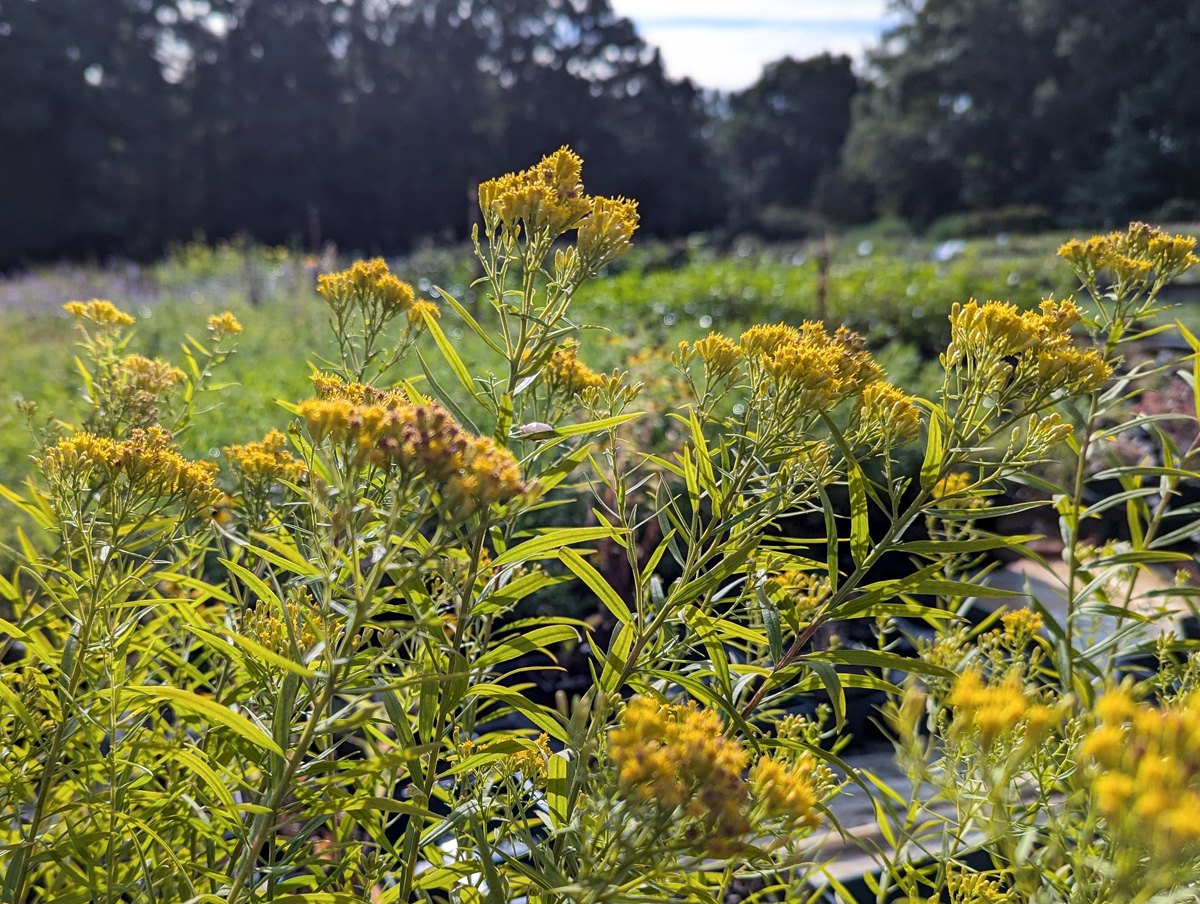
Slender goldentop
Name: Euthamia caroliniana
Zones: 3–10
Size: 1 to 3 feet tall and 1½ to 2½ feet wide
Conditions: Full sun to partial shade; moist to wet soil
Native range: Eastern North America
Also known as Carolina grass-leaved goldenrod, Euthamia caroliniana is a native perennial most commonly found in coastal regions of the eastern United States. Although not a true goldenrod (Solidago spp. and cvs., Zones 3–9), it earns its common name from the flat-topped clusters of golden flowers that appear from August to November. This plant spreads by rhizomes to form small colonies, though slowly enough to be easily maintained. It thrives in sun to light shade and moist to wet soil, though it will tolerate short periods of drought after it’s established. Slender goldentop is ideal for coastal gardens, meadows, pond edges, and low spots in landscapes that collect water.
In addition to being a woefully underrated ornamental plant for autumn flowers, slender goldentop has high environmental value as a late-season food source for native bees. It is deciduous, but as a favor to your local wildlife, leave the foliage uncut until late winter or early spring. Its seeds will provide winter forage for birds, and the hollow stems will house cavity-nesting bees like masons and leaf-cutters.

Virginia sweetspire
Name: Itea virginica
Zones: 5–9
Size: 3 to 6 feet tall and wide
Conditions: Full sun to partial wide; average to wet, well-drained soil
Native range: Eastern North America
Best known for its elegantly draping racemes of white flowers in spring, which resemble catkins, Virginia sweetspire brings a whole new level of interest in fall. Its deciduous foliage responds to the cooling temperatures like a canvas to a brush, becoming painted in rich tones of yellows, purples, and reds. This gorgeous native shrub can be found in the southeastern, mid-Atlantic, and Gulf states.
Like red chokeberry, Virginia sweetspire forms colonies by root suckers when allowed. It thrives in partial to even heavy shade and in moist, well-draining soil; it can tolerate dry conditions, but it may not perform as well. While the straight species Itea virginica can be a challenge to source, cultivars such as ‘Henry’s Garnet’ are more readily available. ‘Henry’s Garnet’ is shorter, with improved flowering and fall color.
 |
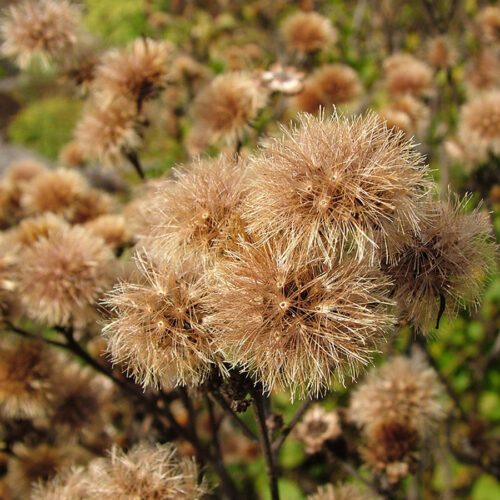 |
New York ironweed
Name: Vernonia noveboracensis
Zones: 5–9
Size: 4 to 8 feet tall and 3 to 4 feet wide
Conditions: Full sun; average to moist soil
Native range: Eastern United States and southern Ontario
This eastern U.S. native perennial carries the garden through the transition from summer into fall, with vibrant violet blooms that persist from August into late September or early October. The flowers are popular among bees and butterflies, as well as one rare specialist pollinator: the denticulate longhorn bee (Melissodes denticulatus), which feeds on the nectar and unusual white pollen of Vernonia species. If left uncut, puffy seed heads follow the flowers and continue to provide interest and feed birds well into fall and winter.
New York ironweed would be ideal for cottage-style and pollinator gardens. The height of this perennial may sound intimidating, but its narrow width makes it suitable for the back of a flower bed. If a shorter, more compact height is desired, cut it back by about half its height in spring. It thrives in full sun and moist, fertile soil but will tolerate average to poor soils. It is generally low-maintenance, though it can occasionally develop rust.
Look beyond the usual suspects at the garden center this year toward native perennials and shrubs that will not only fill your fall garden with color and texture, but also benefit the local ecosystem.
To discuss these plants or ask gardening questions, chat with a regional expert on the Gardening Answers forum.
For more Southeast regional reports, click here.
And check out additional resources on plants with fall interest for the Southeast:
- Unusual Fall Perennials for the Southeast
- Regional Picks: Fantastic Fall Interest—Southeast
- Top Plants for Fall Color in the Southeast
Cheyenne Wine is a writer and photographer for Rare Roots nursery in Mechanicsville, Virginia.
Photos by Cheyenne Wine unless otherwise noted.
Fine Gardening Recommended Products

Planting in a Post-Wild World: Designing Plant Communities for Resilient Landscapes
Fine Gardening receives a commission for items purchased through links on this site, including Amazon Associates and other affiliate advertising programs.

Gardener's Log Book from NYBG
Fine Gardening receives a commission for items purchased through links on this site, including Amazon Associates and other affiliate advertising programs.

The Crevice Garden: How to make the perfect home for plants from rocky places
Fine Gardening receives a commission for items purchased through links on this site, including Amazon Associates and other affiliate advertising programs.



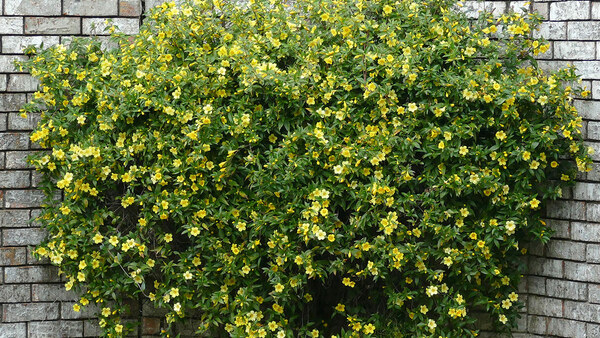
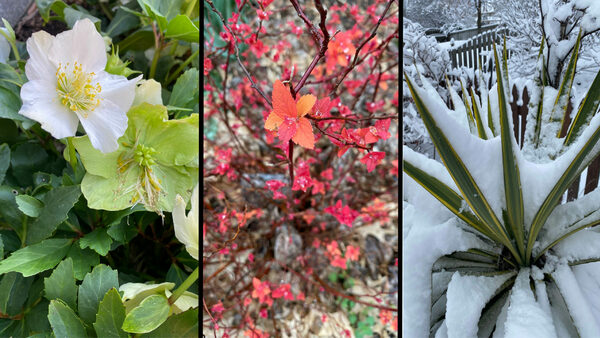
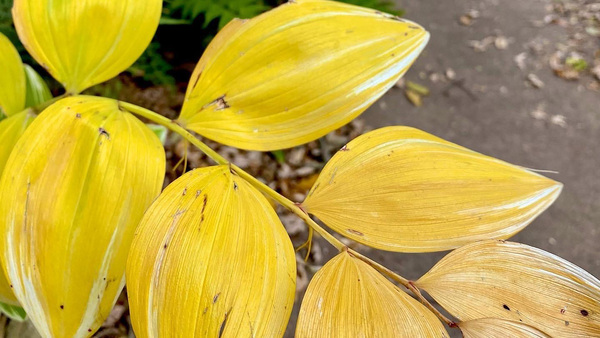













Comments
Log in or create an account to post a comment.
Sign up Log in